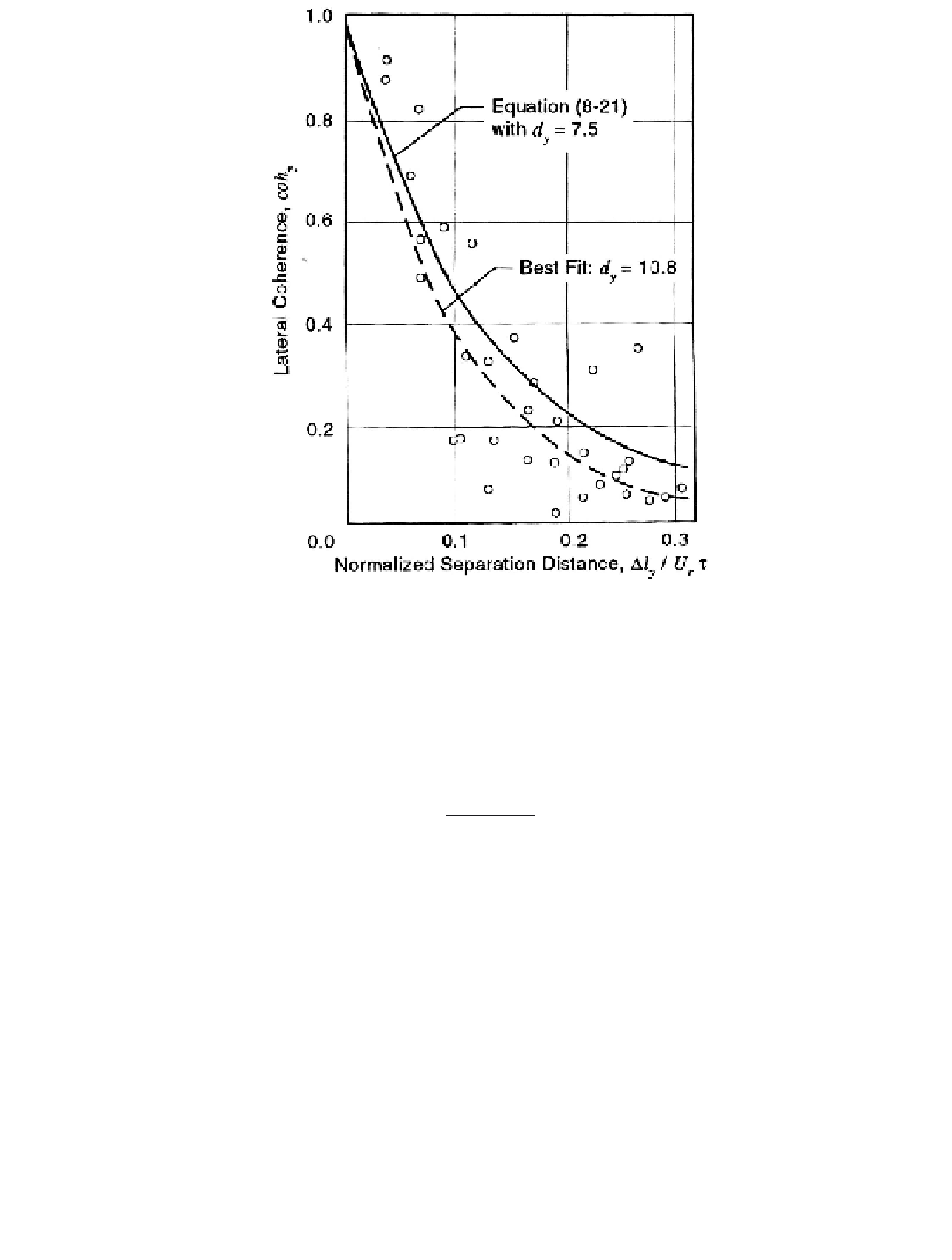Environmental Engineering Reference
In-Depth Information
Figure 8-21. Typical lateral coherence data modeled by exponential decay functions.
[data from Frost and Lin 1981].
Because the coherence function is useful for estimating the sizes of gusts of different du-
rations, Equation (8-21) provides a method for calculating the minimum duration of gusts that
are large enough to engulf a turbine rotor. Solving for the gust duration gives
d
a
D
l
a
U
r
ln(
coh
a
)
(8-22)
t = -
As an example, consider a HAWT with a rotor diameter of 30 m, operating in a wind that
is 15 m/s at the reference elevation of 10 m. Assuming a coherence of 0.5 (a high
coherence for wind-related events) and a decay coefficient of 7.5, the minimum duration
of a gust that can be assumed to be constant over the entire area swept by this rotor is 22
seconds, according to Equation (8-22). Additional information on spatial correlation of
gusts, derived from the
von Karman correlation model
,
is given in Frost
et al.
[1987].
Gust Factor Model for Peak Horizontal Gust Magnitudes and Durations
As discussed previously, a gust model useful to wind turbine engineers correlates
magnitude, duration, and frequency of occurrence. Several such models have been derived
from published gust statistics, such as those given in a number of reports reviewed by
Powell and Connell [1980]. Doran and Powell [1980], Kaimal
et al.
[1981], and Akins
[1981] have also compiled statistics on gust characteristics. Both the magnitude and

Search WWH ::

Custom Search